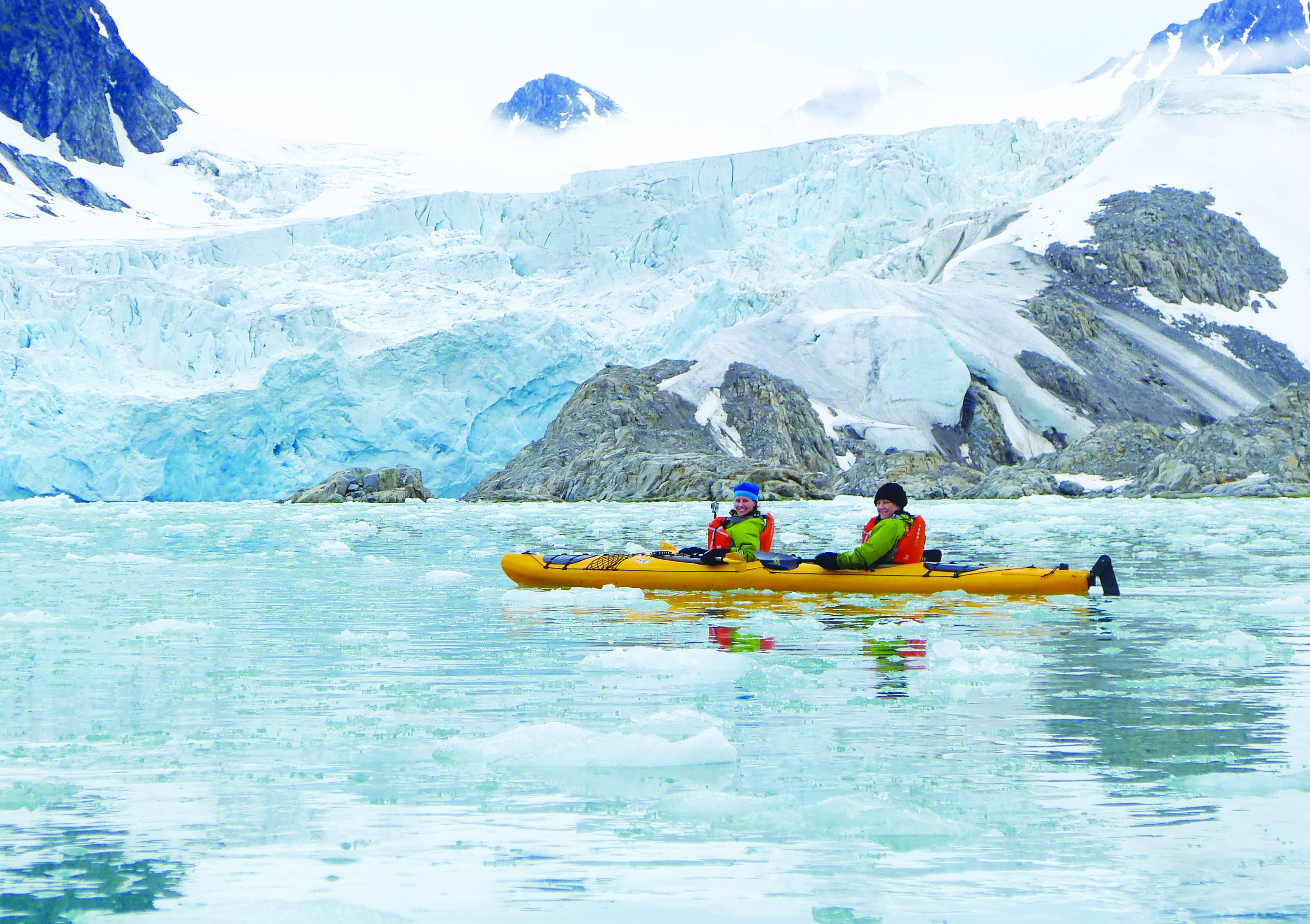Have you ever heard of Spitsbergen? It's the largest island in the Svalbard archipelago, which can be found north of Norway, nestled in the sapphire Arctic Ocean. However, this is not some desolate, ice-swathed place like the South Pole, but in fact a flourishing paradise for a plethora of polar creatures, who call the truly stunning landscape home.
The following article will let you in on interesting facts about Svalbard and Spitsbergen, prior to your expedition cruise with Aurora.

On a Spitsbergen cruise, you'll see myriad natural wonders.
The history of Spitsbergen
Svalbard was officially discovered all the way back in 1596 by Dutchman Willem Barentsz, who was famous for his accurate mapping and expert metrological data, collected from numerous Arctic voyages. However, we say 'officially' because many believe the Vikings would have known about the islands long before this time, though no evidence has so far been found.
From here it was largely used as a hunting ground, as whales, polar bears and foxes were all in abundance. It was also a base for North Pole exploration by the likes of Roald Amundsen.
One of the most important events for Spitsbergen and Svalbard as a whole was the signing of the Svalbard Treaty, which ensured the place remained demilitarised while under the safe protection of Norway (which remains true to this day).
What landscape will you see on a Spitsbergen tour?
The breathtaking terrain of this island is typical of the Scandinavian region, with large portions of land covered in craggy mountain peaks, flowing down into deep, dramatic fjords. One of the most exciting features of Spitsbergen for budding Arctic explorers is the fact that Svalbard is predominantly a protected reserve. Indeed, Visit Norway states around 65 per cent of it has this classification, including national parks and bird sanctuaries (of which there are a total of 15). That means there are plenty of opportunities to encounter the local wildlife in a safe habitat!
Local climate and weather
You might think that its location would make Spitsbergen as chilly as Antarctica in the south, or even as cold as other regions on its latitude in the north. However, Spitsbergen actually has a very mild climate in comparison, particularly if you visit around July/August, as you will on one of our Arctic expedition cruises.
Highs of around 6-7 degrees Celsius can be expected during the day, and even the lows can remain above freezing temperature. You'll also get to see the phenomenon known as 'midnight sun', as from around April-August Spitsbergen receives perpetual daylight.

There are many opportunities to disembark and explore Spitsbergen with Aurora.
The settlements of Spitsbergen
Owed to its rather remote Arctic location, there are not many large settlements on Spitsbergen, or even the rest of Svalbard. Indeed, you'll find that most of them are small mining villages and outposts originally started by early Norwegian and Russian whalers and miners.
Longyearbyen is the capital city of Svalbard, and can be found on Spitsbergen's west coast (along with most of the archipelago's settlements). You'll get a great chance to explore this place on the first day of our Svalbard Odyssey cruise, which offers you an insightful guided tour. This is also where you'll embark on an unforgettable journey around the island aboard the Polar Pioneer, which will act as your floating basecamp while you cruise past glaciers, photograph polar bears and learn all about the myriad bird species of Svalbard from our naturalist and guest lecturers.


